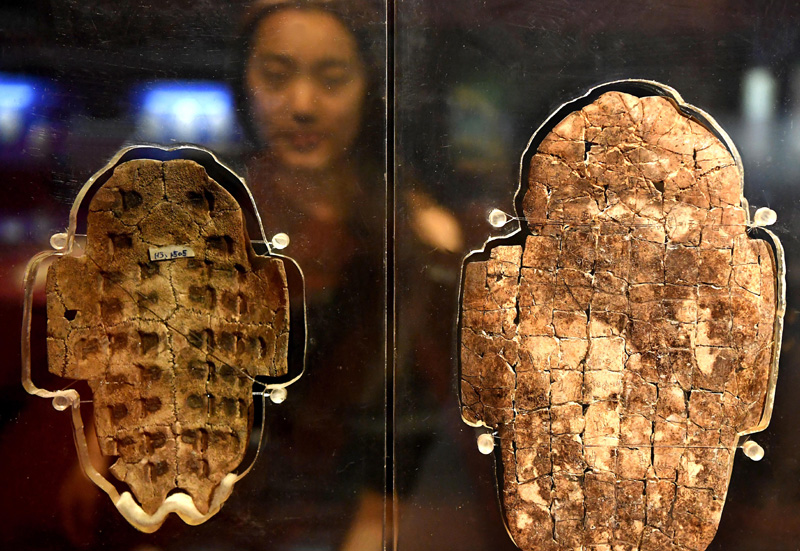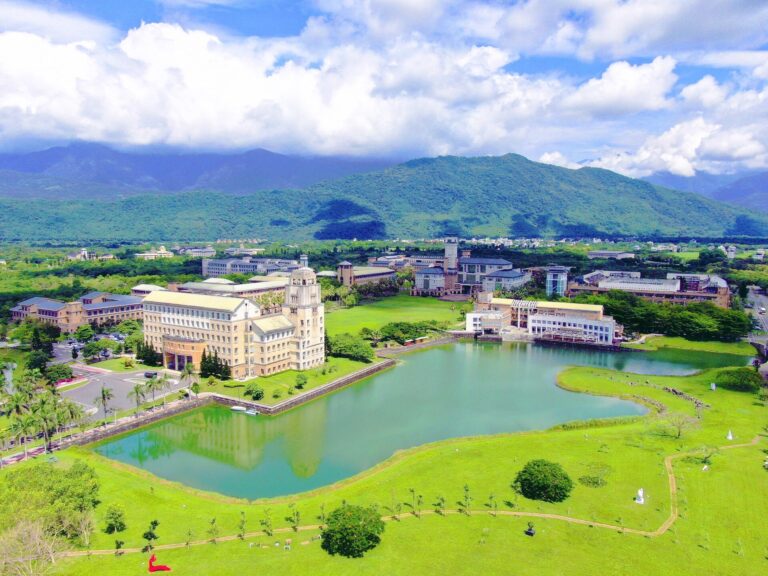
The top ten new archaeological discoveries in China in 2023: Outlining the context of civilization and laying a solid foundation for confidence
From the precious relics of ancient human activities tens of thousands of years ago to the deep-sea treasures of the Maritime Silk Road in the mid-Ming Dynasty; from the high-level tombs located in the vast Central Plains to the rice remains on the southeastern coastal islands… March 22, 2023 The top ten new archaeological discoveries China were officially announced. The 10 shortlisted projects are outstanding representatives of field archaeological work in the past year, which will help us better understand the long history of Chinese civilization and enhance historical and cultural confidence.
Explore the unknown and make multiple discoveries to fill the gaps in history
The new discoveries selected this time tell the story of the origin of early humans on the land of China, the development process of prehistoric culture and the diversity of Chinese civilization, and constantly refresh people’s understanding of history.
The Bashan site group in Yishui, Shandong reveals for the first time that ancient humans made full use of megafauna resources 100,000 years ago, vividly reproducing ancient humans’ adaptation strategies and historical scenes in response to the late Pleistocene environmental changes between the Yellow, Huaihe and Sea. Its preserved continuous cultural accumulation since the late Pleistocene and the uninterrupted Paleolithic cultural development sequence all show the continuous historical development process of human beings in this region.
A large-scale water conservancy system built according to the situation, a large number of wooden piers with exquisite craftsmanship… The water control paradigm of the Qujialing site in Jingmen, Hubei Province reproduces the magnificent picture of the early water control civilization in the Jianghan Plain. Resource management and utilization provide detailed support, and are also important archaeological basis for studying early man-land relations, social organization and other issues.
“The social and cultural development of the Qujialing site has a clear continuity. It reveals the development height and social complexity of prehistoric culture from multiple angles and levels. It is a precious physical evidence for studying the civilization process in the middle reaches of the Yangtze River and provides a basis for exploring the origin of Chinese civilization. The formation and development provide a typical case.” said Zhao Hui, a professor at the School of Archeology and Museology at Peking University.
As a representative kiln for the production of porcelain during the Jin and Yuan Dynasties in Shanxi, Huozhou Kiln plays an important role in the history of Chinese ceramic development. From 2022 to 2023, the first systematic archaeological work was carried out at the Chencun porcelain kiln site in Huozhou, Shanxi, which revealed many kiln industry relics from the Jin, Yuan and Ming dynasties, and a large number of porcelain pieces and kiln furniture were unearthed.
“This archaeological work has for the first time clarified the product appearance and technical characteristics of the Song, Jin, Yuan, Ming and Qing dynasties from an archaeological perspective, established a historical periodization scale for Huozhou kiln industry, and demonstrated the brand-new kiln industry of Huozhou kiln. appearance.” Liu Yan, deputy director of the Shanxi Provincial Institute of Archeology, said that the new archaeological discovery has filled a missing link in the development history of fine white porcelain in the northern region and is a major contribution to the development history of Chinese ceramics.
Eclectic interpretation of diverse and unified Chinese civilization
The Mopanshan site, located in Xinfa Village, Feili Town, Langxi County, Anhui Province, underwent three excavations in 2015, 2016 and 2023, and discovered the Majiabang Culture, Songze Culture, Liangzhu Culture, Qianshanyang Culture, Xia The cultural accumulation that continued from the Shang and Western Zhou Dynasties to the Spring and Autumn Period.
Zhao Dongsheng, associate professor at Nanjing University, believes that the Mopanshan site is of great value for exploring the complexity and civilization process of prehistoric society in this region and the entire lower reaches of the Yangtze River, the Central Plains process of the Bronze Age, and for understanding the evolution of the pluralistic and integrated Chinese civilization in southern Anhui.
The tombs are closely connected and stacked one on top of another. With the efforts of archaeological workers, a large number of funerary objects were unearthed at the Wangzhuang site in Yongcheng, Henan, including jade, bronze, bone, stone, pottery, etc. Among them, the pottery group integrates multiple cultural factors. The main remains belong to the Dawenkou cultural system, but it also has factors such as the Dahe Village type of the Yangshao Culture in the Central Plains, the Qujialing Culture, and the Liangzhu Culture in the south. It also has significant local characteristics. .
The Zhaizhaigou site in Qingjian, Shaanxi is a major breakthrough in the archeology of Fangguo during the Shang Dynasty in recent years. Sun Zhanwei, deputy research librarian of the Shaanxi Provincial Institute of Archeology, said that the large number of bronze chariots and horses, weapons, jade, bone, lacquerware, and tortoise shells unearthed from the site are the same as the material culture of the tombs of high-level nobles in the Yin Ruins, while gold earrings, snakehead daggers, and pottery are similar It has distinctive local characteristics, reflecting the close economic and cultural exchanges between the Loess Hilly Area and the Shang Dynasty, as well as the strong influence of the Shang Dynasty on surrounding areas.
The Sijiaoping site in Li County, Gansu Province is a large-scale architectural site from the Qin Dynasty. According to Hou Hongwei, an associate researcher at the Gansu Provincial Institute of Cultural Relics and Archaeology, the large-scale and regular Qin Dynasty building complex discovered for the first time is another form of Qin sacrificial architecture in addition to the ancestral temple buildings and the ritual buildings.
“This architectural pattern profoundly influenced the architectural style of Deyang Temple, Wang Mang Jiu Temple and even the later Temple of Heaven and Temple of Earth in the Han Dynasty. It is a reflection of China`s will and has a strong ceremonial nature.” The materialized carrier of the historical process of “Great Unification” embodies the style and spirit of the early days of the unified nation in ancient China.
Technology helps open the door to history with multidisciplinary keys
Archaeological research has never been a one-discipline endeavor. The development of multidisciplinary research such as zooarchaeology, botanical archaeology, human bone archaeology, and environmental archaeology has opened up greater space for archaeological research.
The Keqiutou Site Group in Pingtan, Fujian Province includes Keqiutou, Xiying, Donghuaqiu, Guishan and other sites. Among them, human bones and teeth were found at the Xiying site, and the direct dating results of the human bones were about 7,300 years ago. Preliminary research shows that the prehistoric people in Pingtan have a close genetic relationship with the ethnic groups in southern China and Southeast Asia.
In addition, phytolith rice remains discovered at the Xiying and Keqiutou sites can be traced back to more than 7,000 years ago. Traces of rice, millet, and broomcorn millet were also found in plant imprints on pottery sherds. These are also the earliest rice remains on the southeastern coastal islands of China. Botanical archaeological research has found that rice and millet were introduced to Taiwan between 4800 and 4600 years ago, providing new conclusive evidence for the spread of early Austronesian people.
The Xuyuan Street Cemetery in Shangdu, Zhengzhou, Henan Province is a cemetery for high-level nobles from the Baijiazhuang period of the Shang Dynasty with clear structure and function. During the archaeological process, we carried out environmental archaeology, carbon 14 dating, and conducted research on bone isotopes, bone diseases, ancient DNA, etc., on the sources of mineral raw materials for bronze and jade, the hygiene and diet of the people in the cemetery, and the exchanges between ancient ethnic groups. Preliminary results have been achieved in other aspects, providing important academic support for a deep understanding of business civilization.
The archaeological discoveries at the No. 1 and No. 2 shipwreck sites on the northwest slope of the South China Sea are a perfect integration of deep-sea technology and underwater archeology. For the first time, the archaeological survey adopted a series of new technologies and equipment – setting up permanent underwater surveying and mapping base points on deep-sea sunken ships, using long baseline positioning technology for position calibration, and using a number of special technical equipment such as new flexible manipulators and submersible sand blowing devices. etc., marking that my country’s deep-sea archeology has reached the world’s advanced level and is an important milestone in the development of China’s underwater archeology.
“This archaeological discovery completes the historical chain of the South China Sea section of the Maritime Silk Road, proves the historical facts of the development, utilization, and travel of the South China Sea by Chinese ancestors, and also reproduces the prosperity of maritime trade in the mid-Ming Dynasty.” Sichuan University School of History and Culture Academic Dean Huo Wei said.
In the past year, new progress has been made in the fifth phase of the Chinese Civilization Discovery Project. 24 major “Archaeological China” projects have been coordinated and promoted, 265 active archaeological excavation projects have been systematically carried out, and 1,367 basic archaeological projects have been implemented in an orderly manner. . Go further. It is hoped that archaeologists will continue to explore the unknown, reveal the origin, and contribute archaeological power to the construction of the modern civilization of the Chinese nation.
Source: People’s Daily

